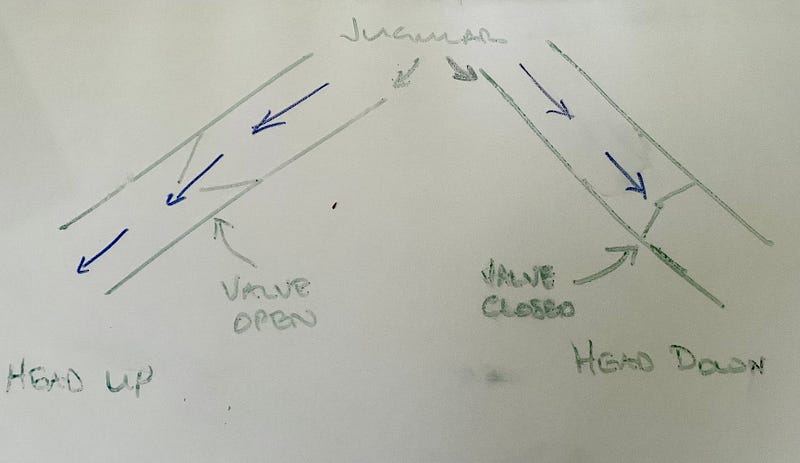Giraffes: How They Drink Without Passing Out
Written on
Understanding Giraffe Drinking Mechanics
Observing a giraffe drinking is one of the most awkward sights in the animal world. Beyond their peculiar posture, there's a lot going on internally when these tall creatures hydrate. While some aspects remain elusive, researchers have uncovered that evolution has provided giraffes with remarkable adaptations to assist them.
Imagine the sensation of blood rushing to your head while hanging upside down on monkey bars as a child. Now picture being 17 feet tall with a heart weighing 25 pounds. For a giraffe, bending down to drink could feel like a life-threatening endeavor!
This scenario creates a significant challenge for giraffes—a drinking dilemma.
Anatomical Insights
To understand this challenge and its solution, one must grasp the fundamentals of giraffe cardiovascular anatomy. Like humans, giraffes possess a heart (the pump) and blood vessels (the pipes—arteries, veins, and capillaries) that circulate blood throughout their bodies. Collectively, these components form the cardiovascular system.
In humans, the heart is centrally located, with blood vessels extending outward. Within this system, specialized vessels transport blood to the brain and return it to the heart. The carotid and vertebral arteries supply blood to the brain, while the jugular vein returns it.
Giraffes have a similar cardiovascular setup; without it, they wouldn’t survive. So, what occurs when they lower their heads? Gravity causes an influx of blood to their heads, resulting in increased blood pressure, especially in the cranial region.
For humans, hanging upside down momentarily may lead to discomfort, such as pressure or headaches, but typically isn’t life-threatening. However, if one remains inverted for extended periods, serious consequences could arise. For giraffes, their 'upside-down' position presents far more severe risks, and without adaptations, their survival would be at stake.
Giraffe's Unique Drinking Challenge
To counteract gravity, a giraffe's heart must exert immense pressure to deliver blood to its head. Their blood pressure averages around 220/180—double that of a typical human's 120/80. While humans may feel a pounding headache when inverted, giraffes face much graver challenges while drinking.
Giraffes don’t hang upside down like children at a playground; they must lower their heads below their hearts to drink, effectively making them 'upside down' frequently. While this position alone isn't fatal, there’s a more pressing issue. Lifting their heads back up after drinking can cause a dangerous drop in blood pressure, potentially leading to fainting. Anyone who's felt dizzy after standing up quickly can understand this phenomenon.
Evolutionary Adaptations
Fortunately for giraffes, evolution has developed solutions to these complex challenges. It’s only fair, considering evolution is responsible for making them so extraordinarily tall.
The awkward drinking position giraffes assume—spreading their legs—isn't an act of clumsiness. Research from Aarhus University in Denmark suggests that this stance lowers the heart's height, reducing the distance between the head and heart. This position may help mitigate the sudden surge of blood pressure that occurs during drinking.
Here’s the fascinating part: Giraffes have valves not only in their hearts but also within their veins. According to scientists at the University of Pretoria in South Africa, giraffes typically possess six valves in each jugular vein. These valves close when the giraffe’s head is down, preventing blood from flowing back into the jugular veins. This mechanism minimizes blood pooling in the brain and helps reduce cranial pressure while drinking.

These valves also assist in managing blood pressure when the giraffe raises its head after drinking, as suggested by the researchers from Aarhus University. Although considerable research has been conducted on giraffe cardiovascular systems, numerous questions persist. The adaptations described here represent our best current understanding, but future studies may unveil even more intriguing insights into giraffes' drinking behaviors.
The first video, "How Drinking Giraffes Avoid a Head Rush," delves into the fascinating adaptations that allow these animals to drink safely despite their height.
The second video, "How Giraffe Drink Water | Facts," explores additional intriguing facts about how giraffes manage to hydrate effectively.
Thank you for reading! Don't forget to subscribe for more captivating scientific insights.